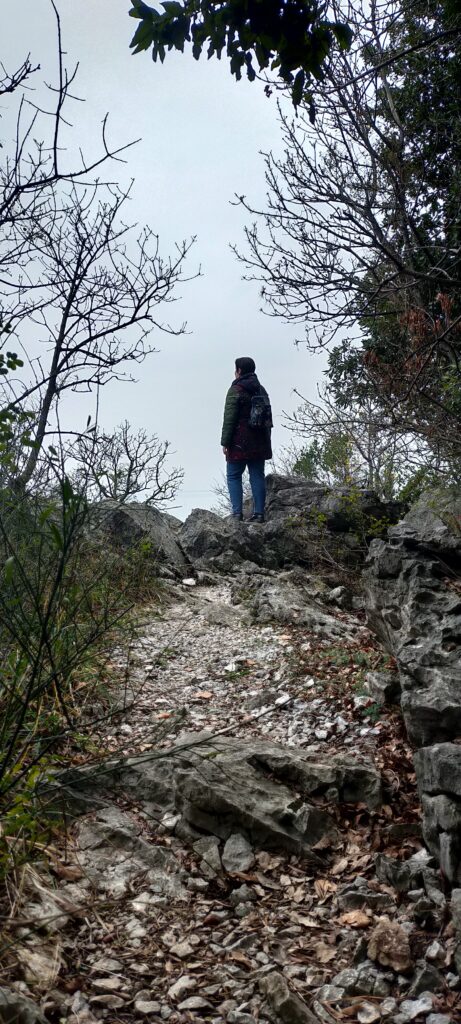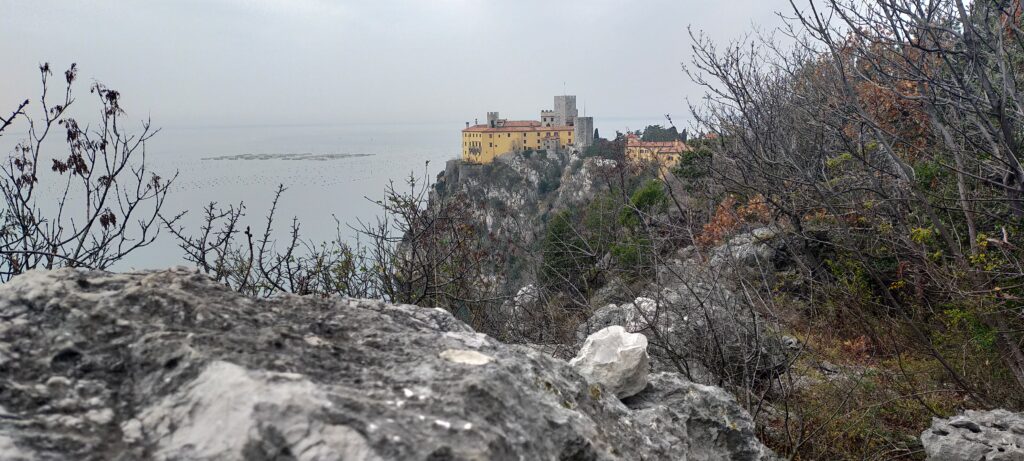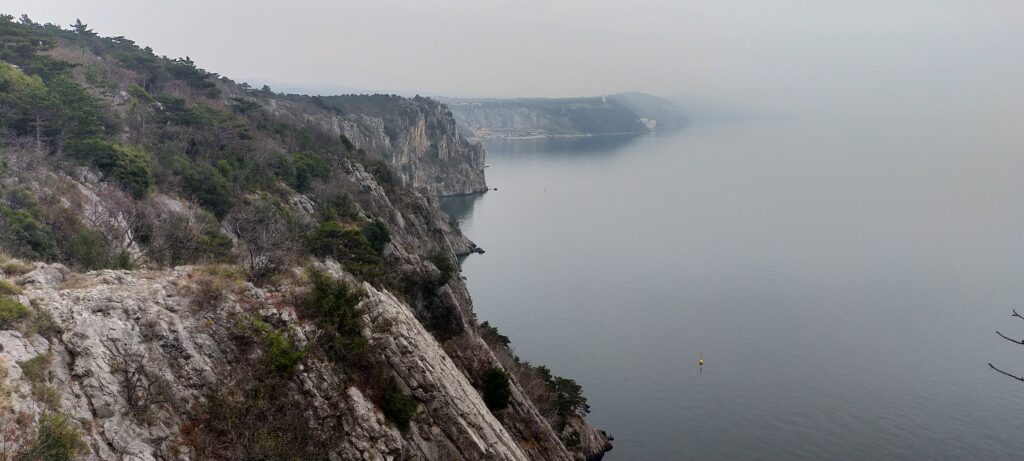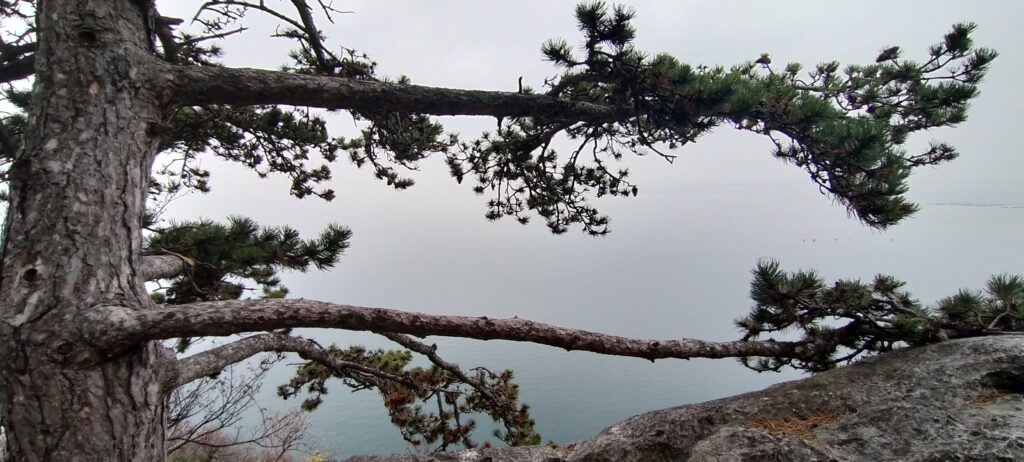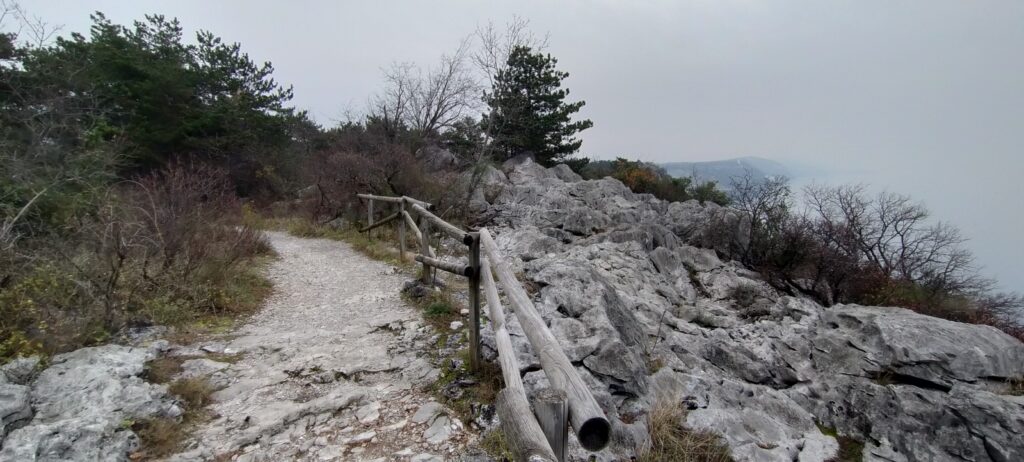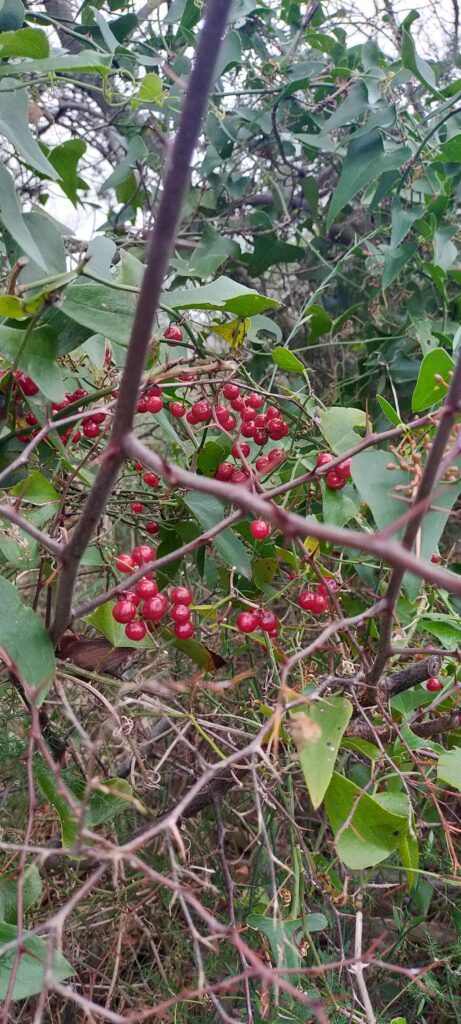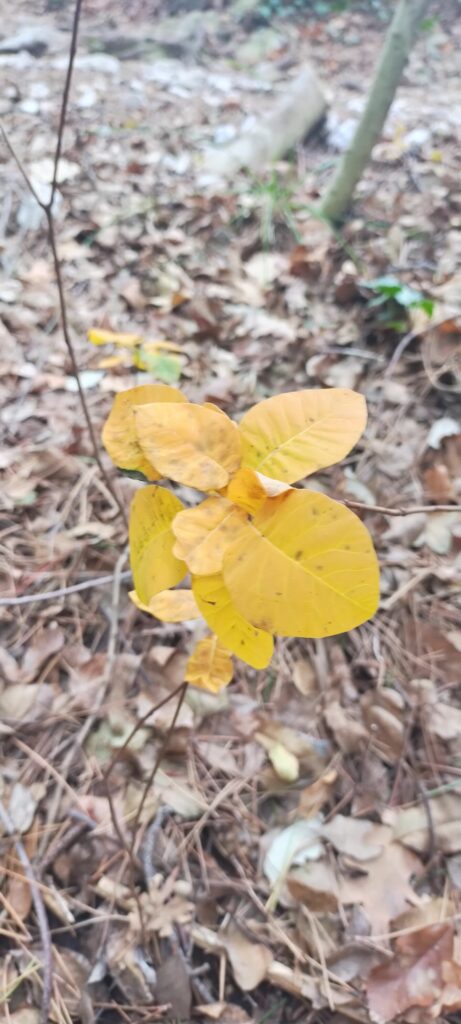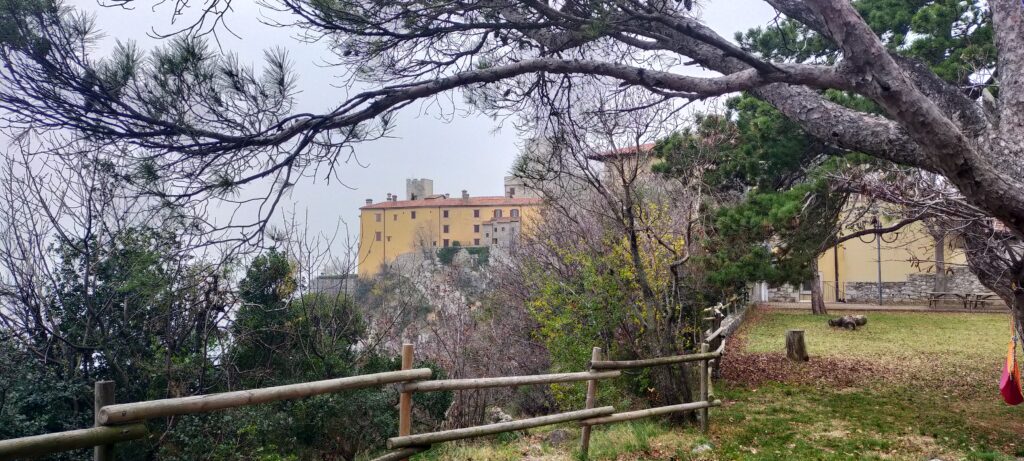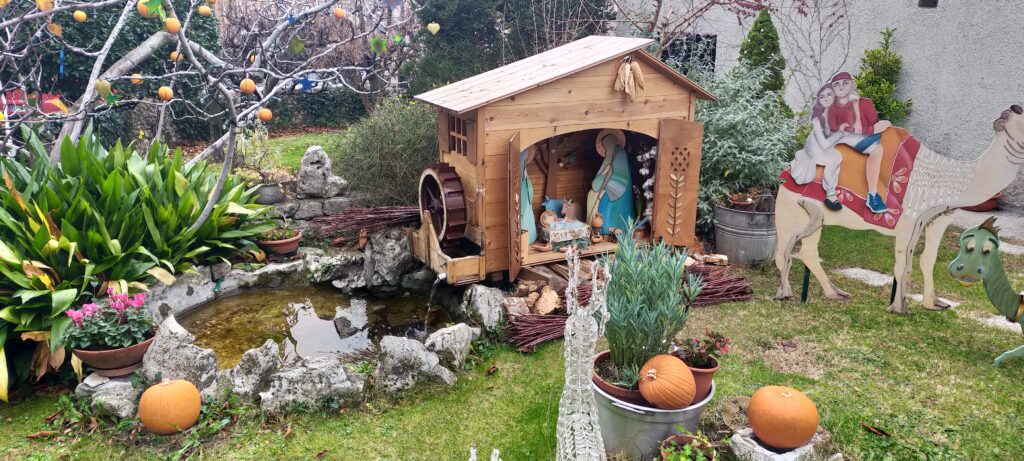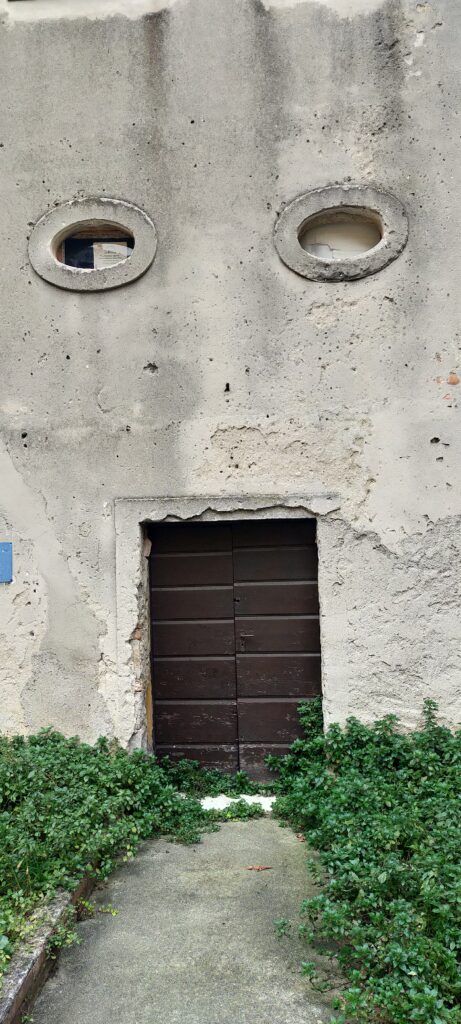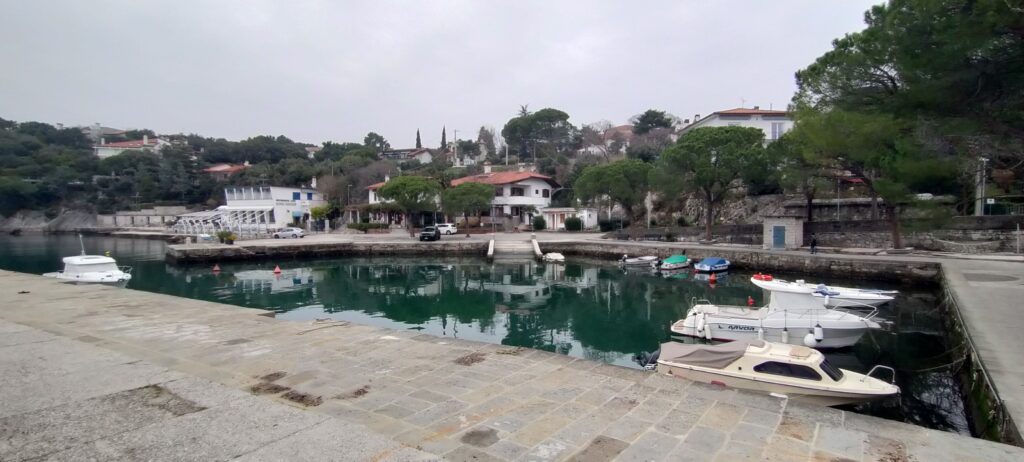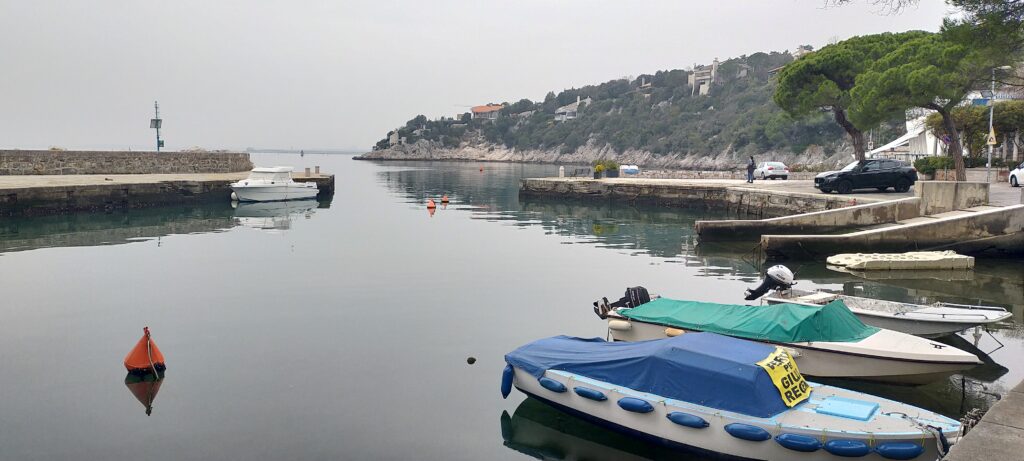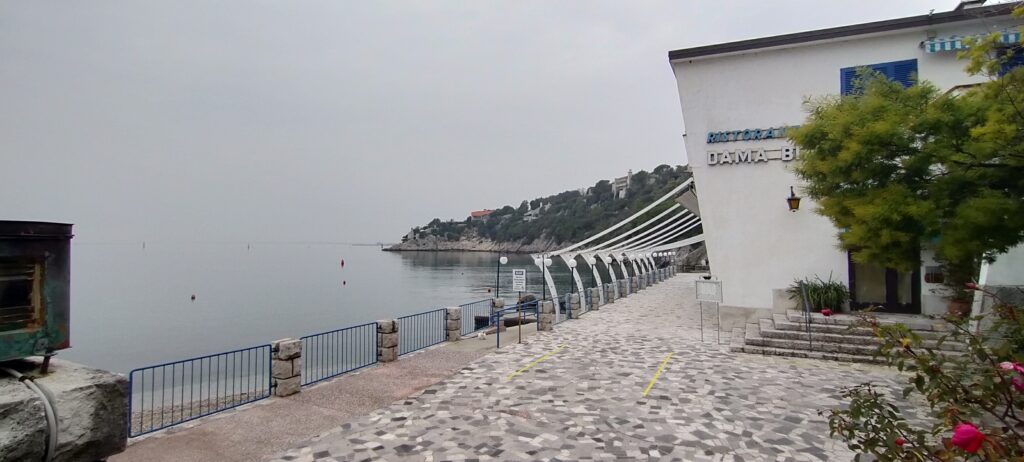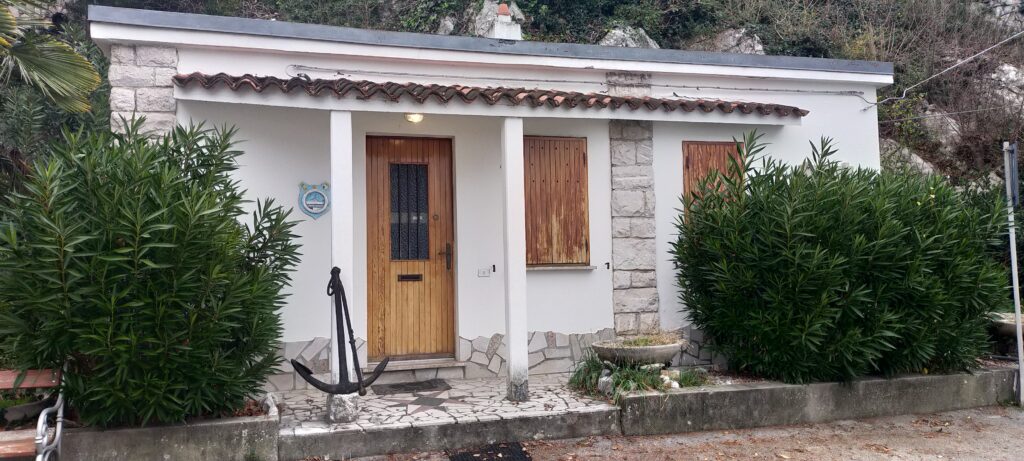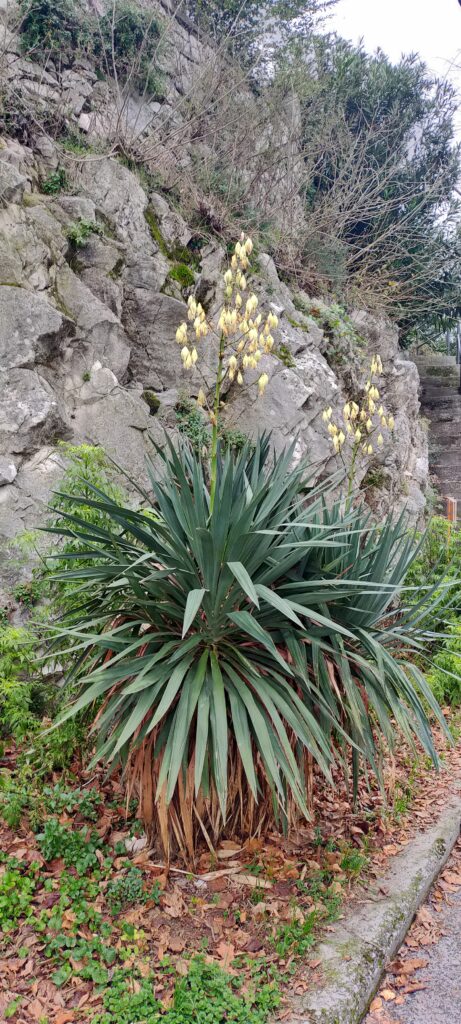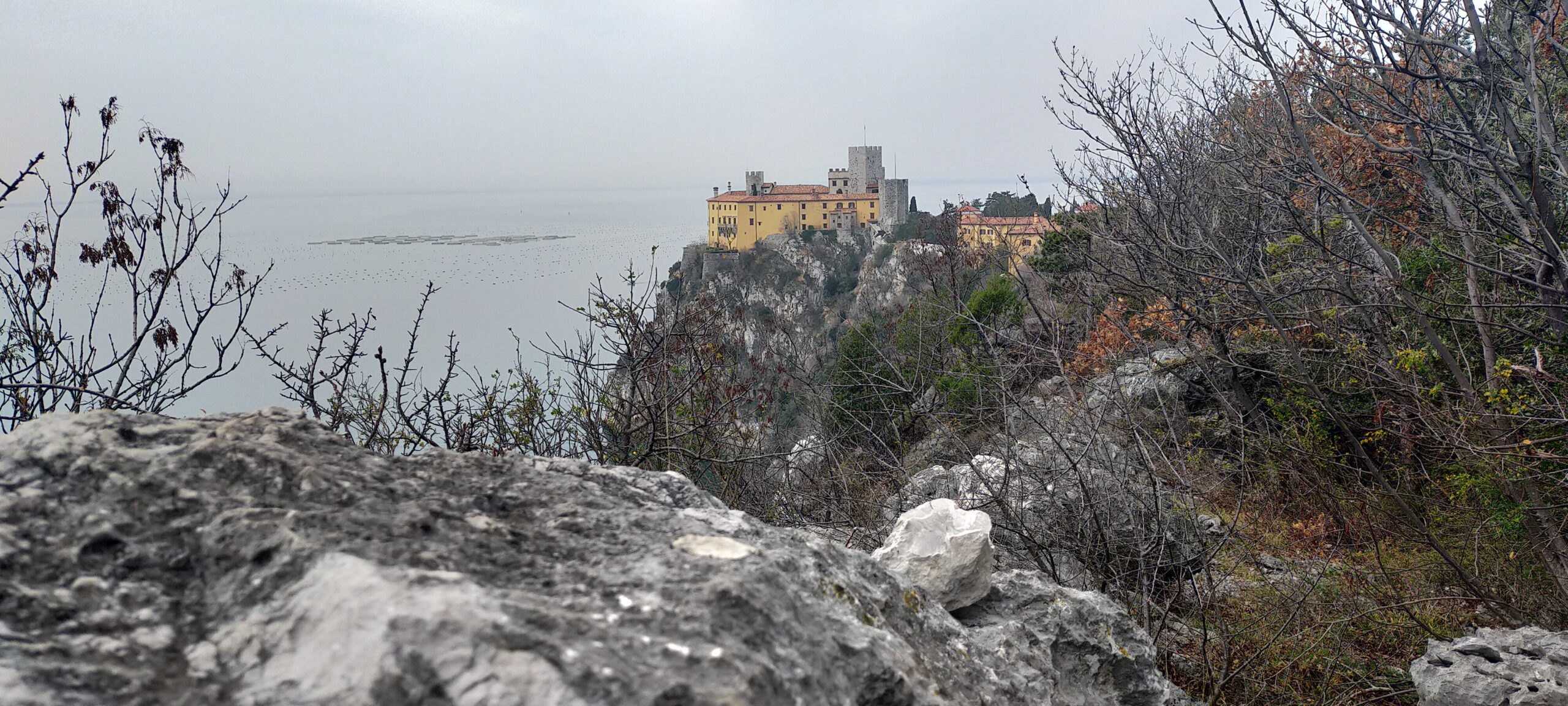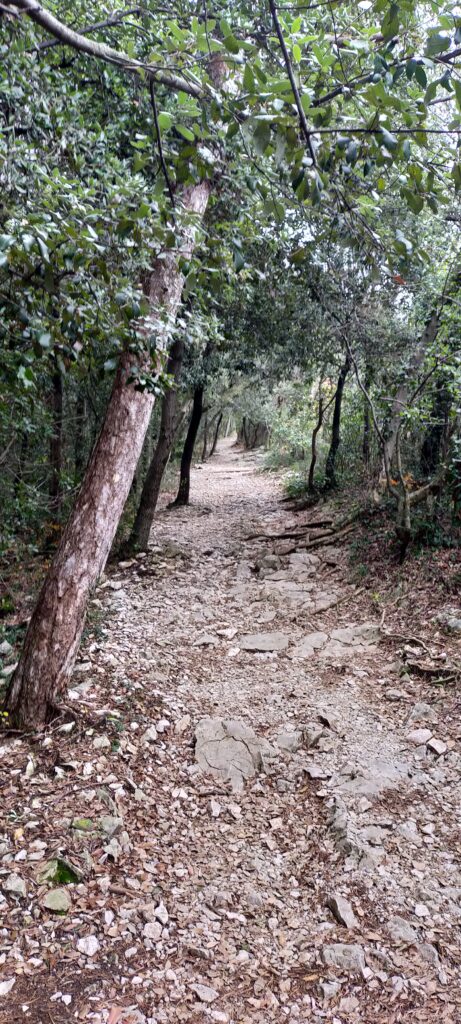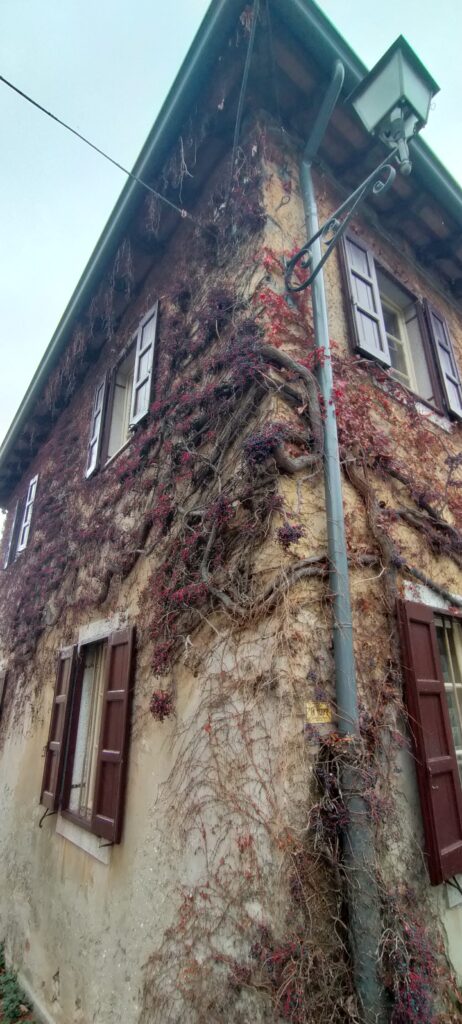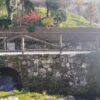The beauty of Friuli, among other things, also lies in the ease with which the sea and mountains can be reached indifferently. For today’s excursion we chose the Rilke path, an easy track that joins the Duino castle and Sistiana.
The path has two entrances (actually there is also a third entrance near the Duino supermarket but the parking spaces are small) and you can choose to park either at the Sistiana terrace (about 10 car parks are available) or at the village of Duino (larger car park with about 30 stalls). We chose the latter option to then be able to walk along the streets of Duino.
A sign at the entrance warns us that the Rilke path winds along the Duino Cliffs Nature Reserve. From Duino to Trieste the coast is overlooking the sea and in this area there are karst rocks that embellish the area and the view.
The property of the area and the castle are owned by the Thurn und Taxis family, a noble German family born around the fourteenth century that over the centuries played a fundamental role in the spread of the postal system in Europe. The influence of the family in the period of the Holy Roman Empire spread to many areas of Europe thanks to the postal service carried out by the various components of which several were and still are members of the Order of the Knights of Malta.
The path is named after the poet Rainer Maria Rilke who was a guest of the castle in the early 1900s. During this period he composed the “Duino Elegies” inspired by the beauty of that area.
The first part of the path, starting from the Duino car park, is made of concrete but after a few hundred meters we turn left onto earth and rock to start the walk. Several maintenance works carried out in recent years have made it possible to make the path more usable but care must still be taken not to trip over.
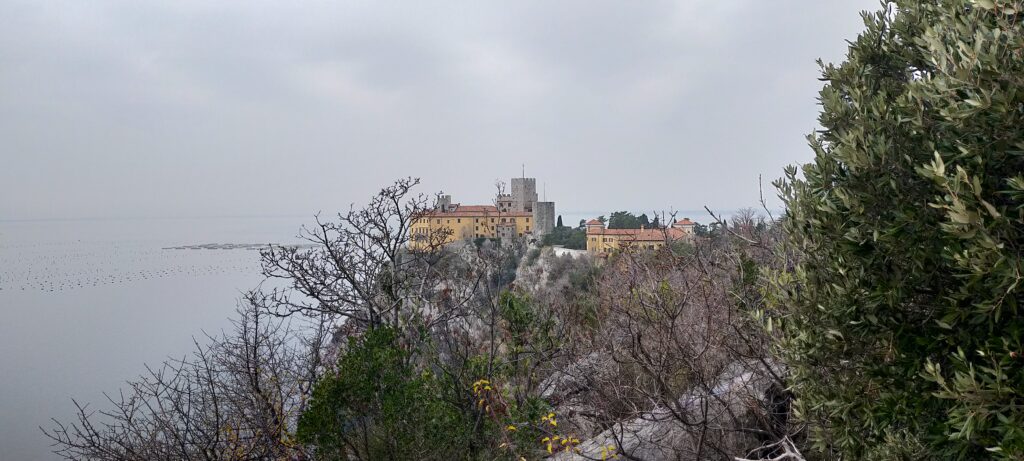
Almost immediately you can admire the sea but be careful, along the entire route, not to get too close to the edge of the cliff … the most dangerous sections have been secured with appropriate wooden fences but it is better to keep children and animals at bay .
At various points, concrete platforms were exploited which, at the time of the Second World War, served as a base for the anti-aircraft batteries. Right from the first of these “terraces” it is possible to grasp the beauty of the Duino Castle, a massive construction built at the end of the 1300s that stands on the rock overlooking the sea.
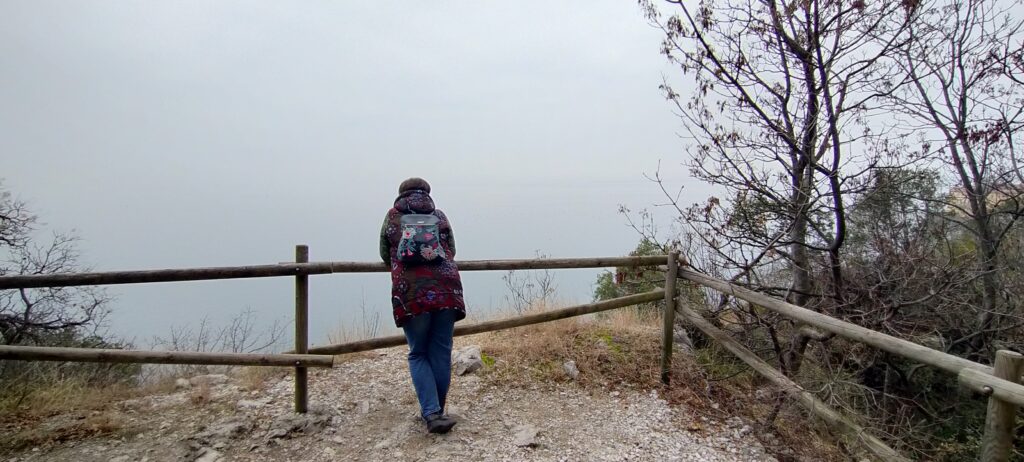
The vegetation along the path is of the Mediterranean type with pine forests, brooms and sumac (a plant that amazes us in autumn with its yellow, orange and red colors) and allows you to enjoy walking in all seasons. During the spring and summer the path is cooled by the continuous sea breeze and the trees present allow you to cool off under their foliage. In autumn and winter, the pine forest to the north protects us from the often present Bora, the wind “symbol” of Trieste while to the south we enjoy the sun and the sea.
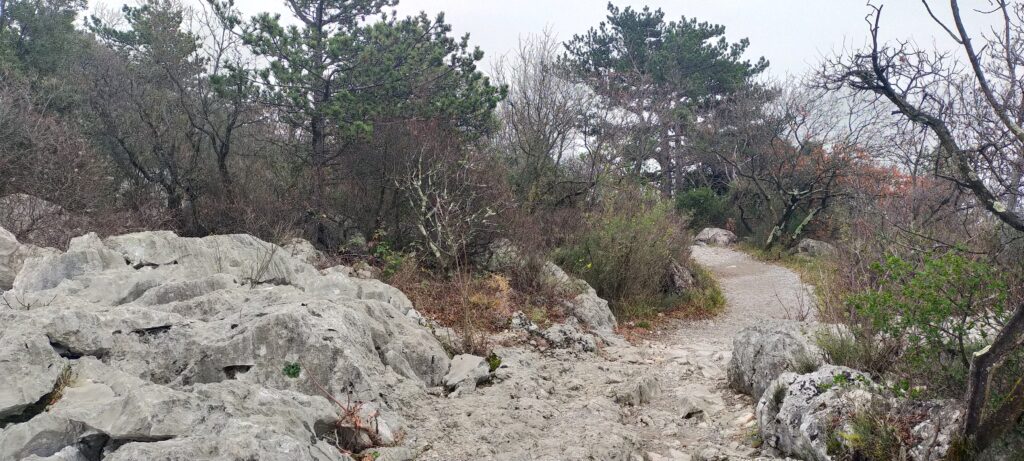
After covering the approximately two kilometers of path and returning to the crossroads near the initial cemented section, we turned left (instead of turning right to return to the parking lot), a choice that allows us to reach the town of Duino from the sea side approaching the castle. Here is the headquarters of the “United World College of Adriatic”, an independent school based in 18 countries that promotes peace among peoples by welcoming students from all over the world. Through a door we come out on the street that leads us to the center of Duino.
Here there is also the main entrance to the castle but which at the time of our visit was closed due to the Covid-19 epidemic.
Given the impossibility of visiting the Castle with its park, we went down to Duino-mare with its marina and some restaurants renowned for their fish-based cuisine. The calm sea and the absence of tourists encouraged us to rest on one of the benches in the port enjoying the tranquility of the place.
 Duino Castle is called New Castle as there is also a second older castle which can be reached on foot. Pay attention during the visit as the area is rocky and overlooking the sea. Linked to this castle there is also the legend of the “Dama Bianca” (White Lady hence the name of the restaurant located in the small port of Duino): the wife of the nobleman who lived in the old castle was pushed into the sea by her husband blinded by her jealousy; following this violence, the woman turned into the white rock that is still visible at the base of the rock on which the castle rests.
Duino Castle is called New Castle as there is also a second older castle which can be reached on foot. Pay attention during the visit as the area is rocky and overlooking the sea. Linked to this castle there is also the legend of the “Dama Bianca” (White Lady hence the name of the restaurant located in the small port of Duino): the wife of the nobleman who lived in the old castle was pushed into the sea by her husband blinded by her jealousy; following this violence, the woman turned into the white rock that is still visible at the base of the rock on which the castle rests.
